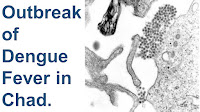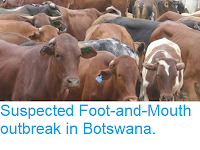Four Human deaths from Rabies have been confirmed in Timor-Leste (formerly East Timor) between 17 May and 17 June 2025, according to a bulletin issued by the World Health Orgnization on 24 July 2024. All four had been bitten by Dogs infected by the disease, and suffered syptoms including hydrophobia, photophobia, aggressiveness, convulsions, and hallucinations, and all four were subsequently confirmed as Rabies infections by Reverse Transcription Polymerase Chain Reaction testing at the National Health Laboratory.
The first fatality was an adult male from Ermera Municipality, who was bitten by a Dog in March 2025, and sought medical help on 15 May, subsequently dying in a hospital two days later. The second fatality, another adult male, this time from Oecusse Municipality, who was bitten by a Dog in June 20242, and arrived at a regional hospital with symptoms on 27 May 2024, subsequently dying on 30 May. The third case was another adult male, this time from Bobonaro Municipality, who arrived at a medical centre on 12 June 2025, having been bitten by a Dog 2-3 months earlier. This parient subsequently died on 13 June. The final case was a female child from Bobonaro Municipality, who was taken into medical care on 12 June 2025, having been bitten by a Dog about two months earlier. This patient subsequently died on 17 June. Two further Rabies fatalities were reported in Oecusse Municipality in 2024.
The outbreak appears to have begun in Dogs in Oecusse Municipality in March 2024, since when 103 Dogs have died from the disease in Oecusse and Bobonaro Municipalities, as well as two Goats, one each in Oecusse and Bobonaro, and a Pig in Bobinaro. Oecusse Municipality forms an enclave within Indonesia's East Nusa Tenggara Province, where Rabies is considered to be endemic and Human fatalities are frequently reported, with Bobonaro shares a border with the province. Ermera Municipality lacks a border with Indonesia, but borders Bobonaro.
The rising number of Rabies deaths in Timor-Leste suggests the disease is spreading across the its borders with Indonesia, pobably via infected Dogs, and becoming established within the smaller nation. The World Health Organization recomends that this is addressed through a combination of Dog vaccinations and education to raise public awareness of the disease.
Between March 2024 and 15 June 2025, 1445 dog scratches and bites were reported in Timor-Leste, 41% of which were considered to by Catagoy III exposures, which is to say exposures in which the skin is broken and saliva from an Animal has come into contact with this break. World Health Organization guidelines recomend that in such cases the wound should be washed immediately and the patient should be given immediate vaccination and administration of rabies immunoglobulin/monoclonal antibodies. Of the 1445 known Catagory III exposures in Timor-Leste in 2024 and 2025, only 66% began this course of vaccination and antibody administration, and only 18% completed the course.
Rabies is caused by Viruses of the genus Lyssavirus, a member of the Rhabdoviridae Family of negative-sense single-stranded RNA Viruses, which also includes pathogens attacking Fish, Insects and Plants. Rabies is spread through the saliva of infected animals, and causes hydrophobia (fear of water), anxiety, insomnia, confusion, agitation, abnormal behaviour, paranoia, terror, and hallucinations, followed by paralysis, coma and death in Humans. Many animals (notably Dogs) become extremely aggressive at this stage and will bite anything that comes near them, helping to spread the disease.
In Humans, the disease typically has a gestation period of about three months, during which time the disease can be treated by repeated vaccination and doses of human rabies immunoglobulin, though if treatment is not begun within ten days of infection it is less likely to be successful, and once the patient starts to develop symptoms the disease is almost invariably fatal. Any wound thought to have been caused by an infected animal should be washed thoroughly under running water for at least five minutes, before being treated with alcohol or iodine, and immediate medical attention sought.
See also...



.jpg)


.jpg)


















